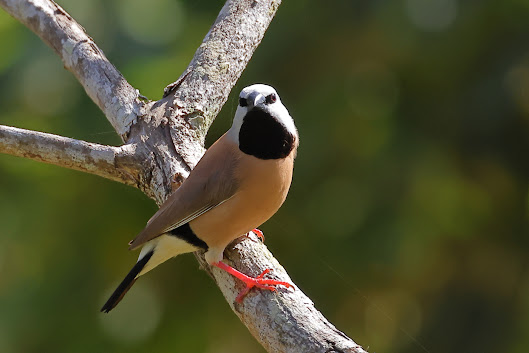A pair of Hardheads (Aythyla australis) turned up last month. Two became four, six, eight, 10, 12, 16, 18 in ensuing weeks. A similar process is building up the Royal Spoonbills (Platalea regia).

A solo Black-winged Stilt (Himantopus himantopus) was joined today by two others and the Glossy Ibis (Plegadis falcinellus) by one other. And the first Little Egret (Egretta garzetta) of the season was running about the margins.
Still no sign of sandpipers, godwits, plovers or stints. Never too many, but this year the lagoon shallows after broken weather and many showers (and rain) since May are 20cm to 30cm deeper than in a drier Dry.
It's possible the reed flats that in past years could support trucks spraying water weeds may not dry out at all in 2008. Good for crakes, rails, bitterns and many other shy species, not so good for those seeking to spot them.




Are the Tyto wetlands man made?
ReplyDeleteYou have a fascinating mix of birds up there. Quite different from here around the bay. We see the sandpipers etc but not the crakes etc.
ReplyDeletehi Tony,
ReplyDeletewhat do you mean by "the first of the season"?
Do they come to the wetlands to breed? And if so, I would have thought that the breeding season would be in full swing and coming to a close as the wet season approaches.
Have I got my impression of the bird breeding season all wrong for your area?
Regards
Gaye
Hi Mosura: Yes. About 12 years ago lagoons and mounded islands were shaped, from degraded common grazing/swamp/creek overflow.
ReplyDeleteHi Mick: But we only get the small waders for 1-3 months.
Hi Gaye: Sorry, didn't make it clear. Reference was to dry season (May-Nov). All egrets and herons go elsewhere to breed, usually from early in Wet. Littles have breeding colony 100km south close to Bohle R outlet near Townsville. Point was they've been slow to show up, probably because lagoon's margins and shallows not suffiently exposed.